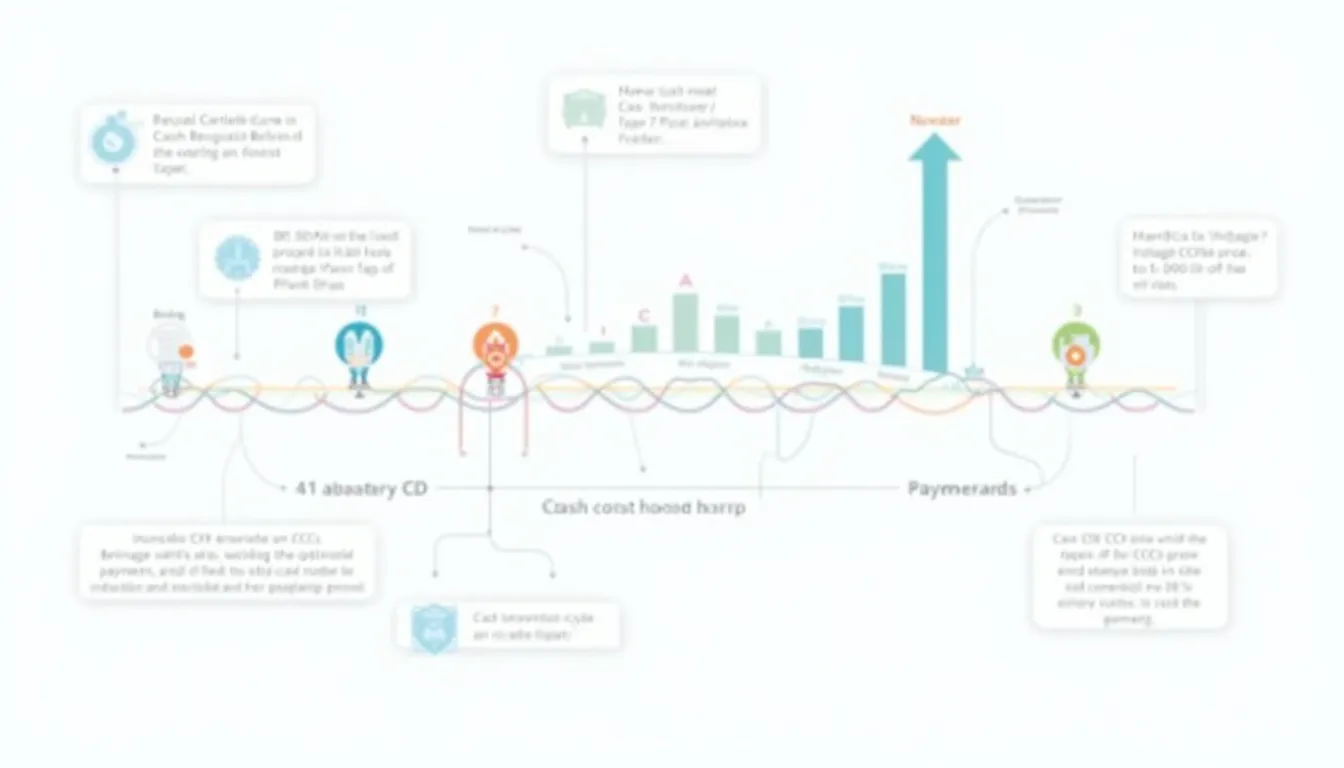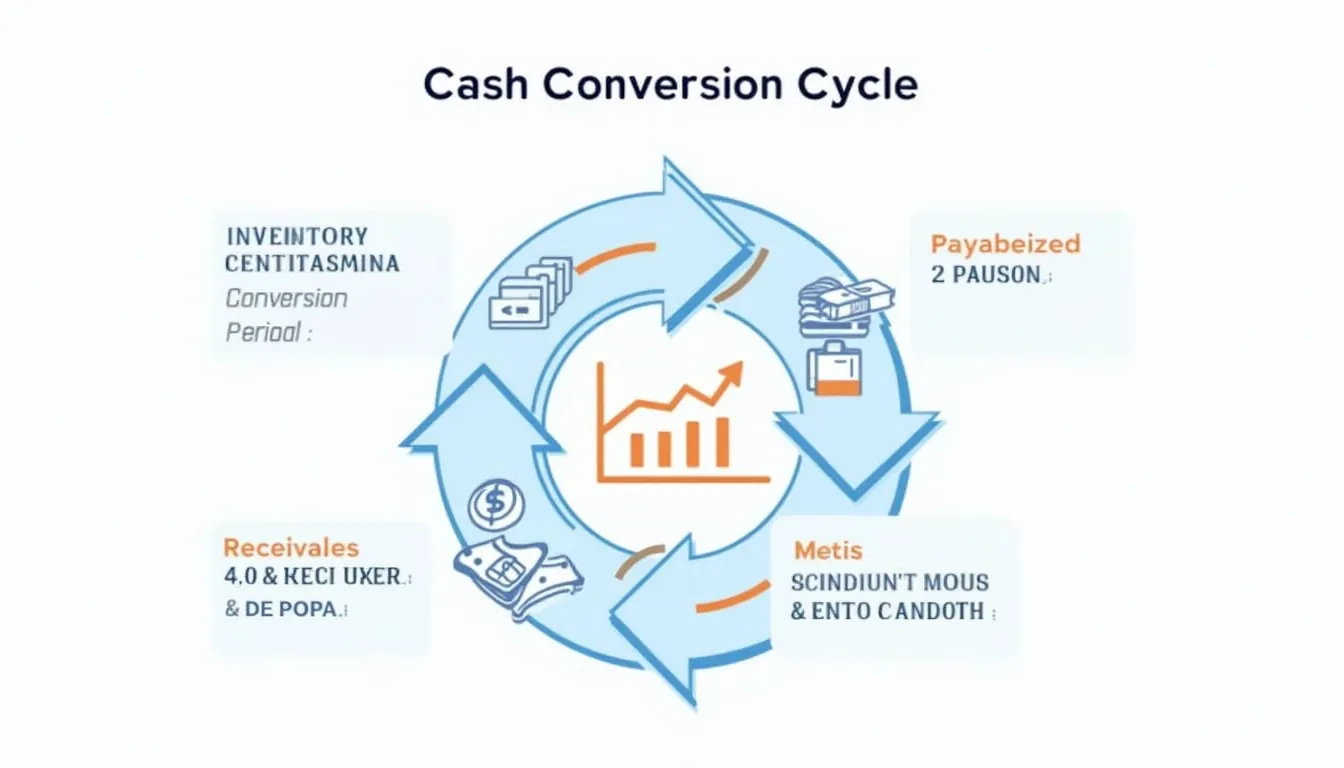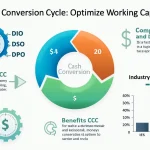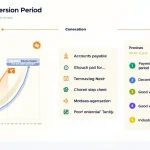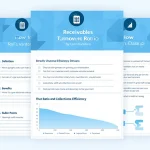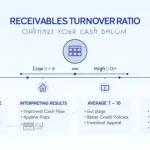Cash Conversion Cycle Calculator
Is this tool helpful?
How to Use the Cash Conversion Cycle Calculator Effectively
The Cash Conversion Cycle (CCC) Calculator is a powerful tool designed to help businesses analyze and optimize their working capital management. To use this calculator effectively, follow these steps:
- Enter the Inventory Conversion Period: Input the average number of days it takes for your business to sell its inventory. This value represents how long inventory sits before being sold.
- Input the Receivables Conversion Period: Enter the average number of days it takes to collect payments from customers after a sale has been made.
- Provide the Payables Conversion Period: Input the average number of days your business takes to pay its suppliers or creditors.
- Click “Calculate”: Once you’ve entered all three values, click the “Calculate” button to generate your Cash Conversion Cycle result.
- Analyze the Result: The calculator will display your CCC in days, helping you understand how long it takes for your business to convert investments in inventory into cash flows from sales.
By using this calculator regularly, you can track changes in your CCC over time and make informed decisions to improve your working capital management.
Understanding the Cash Conversion Cycle: Definition, Purpose, and Benefits
The Cash Conversion Cycle, also known as the Net Operating Cycle or Cash-to-Cash Cycle, is a crucial financial metric that measures the efficiency of a company’s working capital management. It represents the length of time, in days, that it takes for a company to convert its investments in inventory and other resources into cash flows from sales.
The CCC is calculated using the following formula:
$$ \text{Cash Conversion Cycle} = \text{Inventory Conversion Period} + \text{Receivables Conversion Period} – \text{Payables Conversion Period} $$The purpose of the Cash Conversion Cycle is to provide insights into a company’s operational efficiency and liquidity management. By understanding and optimizing the CCC, businesses can:
- Improve cash flow management
- Reduce working capital requirements
- Enhance overall financial performance
- Identify areas for operational improvement
- Make informed decisions about inventory management, credit policies, and supplier relationships
Benefits of Using the Cash Conversion Cycle Calculator
Incorporating the Cash Conversion Cycle Calculator into your financial analysis toolkit offers numerous benefits:
1. Quick and Accurate Calculations
The calculator eliminates the need for manual calculations, reducing the risk of errors and saving valuable time. With just a few inputs, you can instantly obtain your CCC value.
2. Enhanced Decision-Making
By regularly monitoring your CCC, you can make data-driven decisions to optimize your working capital management. The calculator provides a clear metric to guide your strategies for inventory management, accounts receivable, and accounts payable.
3. Benchmarking and Performance Tracking
Use the calculator to compare your CCC against industry benchmarks or track your company’s performance over time. This allows you to identify trends and areas for improvement in your cash flow management.
4. Improved Cash Flow Forecasting
Understanding your CCC helps in predicting future cash flows more accurately. This information is invaluable for financial planning and budgeting purposes.
5. Operational Efficiency Analysis
The CCC calculator breaks down the cycle into its components, allowing you to pinpoint specific areas where efficiency can be improved, such as inventory turnover or collection periods.
Addressing User Needs and Solving Specific Problems
The Cash Conversion Cycle Calculator addresses several key needs and solves specific problems faced by financial managers, business owners, and analysts:
1. Cash Flow Management
For businesses struggling with cash flow issues, the CCC calculator provides insights into how quickly the company converts its operations into cash. By identifying bottlenecks in the cycle, managers can implement targeted strategies to improve cash flow.
2. Working Capital Optimization
Companies looking to optimize their working capital can use the CCC calculator to understand how changes in inventory management, credit policies, or payment terms affect their overall cash cycle. This allows for more efficient use of working capital.
3. Performance Evaluation
The CCC metric serves as a key performance indicator for evaluating the efficiency of a company’s operations and financial management. The calculator makes it easy to track this KPI over time or compare it with industry peers.
4. Strategic Planning
For businesses engaged in strategic planning, the CCC calculator helps in assessing the financial impact of different operational strategies. It can guide decisions on inventory levels, credit terms, and supplier negotiations.
5. Investor Communication
Companies can use the CCC metric calculated by this tool to communicate their operational efficiency to investors and stakeholders, providing a clear picture of how effectively the business manages its working capital.
Practical Applications and Use Cases
The Cash Conversion Cycle Calculator has numerous practical applications across various industries and business scenarios. Here are some illustrative examples:
1. Retail Industry
A retail company can use the CCC calculator to optimize its inventory management. For instance:
- Current CCC: 60 days (Inventory: 45 days, Receivables: 30 days, Payables: 15 days)
- After implementing just-in-time inventory: 45 days (Inventory: 30 days, Receivables: 30 days, Payables: 15 days)
The reduction in inventory days leads to a shorter CCC, improving cash flow and reducing working capital needs.
2. Manufacturing Sector
A manufacturer can use the calculator to assess the impact of extending payment terms to customers:
- Initial CCC: 75 days (Inventory: 60 days, Receivables: 45 days, Payables: 30 days)
- After extending customer payment terms: 90 days (Inventory: 60 days, Receivables: 60 days, Payables: 30 days)
This analysis helps the company weigh the benefits of potentially increased sales against the cost of a longer cash cycle.
3. Technology Startups
A growing tech startup can use the CCC calculator to monitor its cash efficiency as it scales:
- Year 1 CCC: 30 days (Inventory: 15 days, Receivables: 45 days, Payables: 30 days)
- Year 3 CCC: 15 days (Inventory: 10 days, Receivables: 35 days, Payables: 30 days)
This improvement demonstrates to investors that the company is becoming more efficient in managing its working capital as it grows.
4. Seasonal Businesses
A company with seasonal sales can use the calculator to plan for peak periods:
- Off-season CCC: 45 days (Inventory: 60 days, Receivables: 30 days, Payables: 45 days)
- Peak season CCC: 30 days (Inventory: 30 days, Receivables: 30 days, Payables: 30 days)
This analysis helps in preparing inventory and cash flow strategies for different parts of the business cycle.
5. Supply Chain Optimization
A business looking to optimize its supply chain can use the CCC calculator to assess different scenarios:
- Current CCC: 60 days (Inventory: 45 days, Receivables: 30 days, Payables: 15 days)
- After negotiating better supplier terms: 75 days (Inventory: 45 days, Receivables: 30 days, Payables: 30 days)
This shows how extending payables can improve the company’s cash position, even if it results in a longer CCC.
Frequently Asked Questions (FAQ)
1. What is a good Cash Conversion Cycle?
A “good” CCC varies by industry and company size. Generally, a shorter CCC is better as it indicates efficient working capital management. However, it’s essential to compare your CCC with industry benchmarks for a more accurate assessment.
2. Can the Cash Conversion Cycle be negative?
Yes, a negative CCC is possible and can be advantageous. It occurs when a company receives payment for goods sold before it has to pay its suppliers. This situation is common in some retail businesses with high inventory turnover and favorable supplier terms.
3. How often should I calculate my company’s CCC?
It’s recommended to calculate your CCC at least quarterly. However, businesses with rapid inventory turnover or those implementing new strategies may benefit from monthly calculations.
4. How can I improve my Cash Conversion Cycle?
To improve your CCC, consider:
- Optimizing inventory management to reduce the inventory conversion period
- Improving credit collection practices to shorten the receivables conversion period
- Negotiating better payment terms with suppliers to extend the payables conversion period
5. Is a shorter CCC always better?
While a shorter CCC generally indicates better working capital management, it’s important to balance efficiency with other business objectives. For example, maintaining higher inventory levels might lead to a longer CCC but could be necessary to meet customer demand or take advantage of bulk purchasing discounts.
6. How does the CCC relate to other financial metrics?
The CCC is closely related to other working capital metrics like the current ratio and quick ratio. It provides a more dynamic view of liquidity management compared to these static ratios. The CCC also impacts profitability metrics by influencing the efficiency of working capital use.
7. Can the CCC calculator be used for all types of businesses?
The CCC calculator is most relevant for businesses that deal with physical inventory and have accounts receivable and payable. Service-based businesses or those with immediate cash transactions may find some components of the CCC less applicable.
Conclusion: Empowering Financial Decision-Making with the CCC Calculator
The Cash Conversion Cycle Calculator is an indispensable tool for businesses seeking to optimize their working capital management and enhance their overall financial performance. By providing quick, accurate calculations of this crucial metric, the calculator empowers financial managers, business owners, and analysts to make informed decisions that can significantly impact a company’s cash flow and operational efficiency.
Key benefits of using the CCC Calculator include:
- Improved cash flow management
- Enhanced working capital optimization
- Better inventory management strategies
- More effective accounts receivable and payable policies
- Increased ability to benchmark performance against industry standards
- Greater insights for strategic financial planning
By regularly utilizing this tool and analyzing your Cash Conversion Cycle, you can identify areas for improvement in your business operations, make data-driven decisions, and ultimately drive your company towards greater financial success.
Take action today: Start using the Cash Conversion Cycle Calculator to gain valuable insights into your company’s working capital efficiency. Whether you’re looking to optimize inventory levels, improve collection practices, or negotiate better supplier terms, the CCC Calculator provides the foundation for making informed, strategic financial decisions that can positively impact your business’s bottom line.
Important Disclaimer
The calculations, results, and content provided by our tools are not guaranteed to be accurate, complete, or reliable. Users are responsible for verifying and interpreting the results. Our content and tools may contain errors, biases, or inconsistencies. We reserve the right to save inputs and outputs from our tools for the purposes of error debugging, bias identification, and performance improvement. External companies providing AI models used in our tools may also save and process data in accordance with their own policies. By using our tools, you consent to this data collection and processing. We reserve the right to limit the usage of our tools based on current usability factors. By using our tools, you acknowledge that you have read, understood, and agreed to this disclaimer. You accept the inherent risks and limitations associated with the use of our tools and services.
